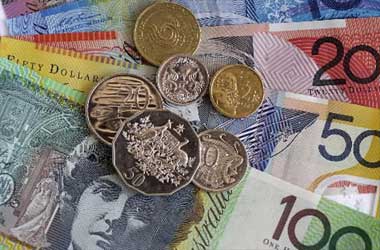 Weak consumer spending and rising inflation have been keeping the Pound under pressure for the past two months.
Weak consumer spending and rising inflation have been keeping the Pound under pressure for the past two months.
On the contrary, an unexpected recovery in the price of iron ore, strong employment data, and RBA’s upbeat statement about the Australian economy had strengthened the Aussie. The GBP/AUD pair, which had fallen by over 600 pips to 1.6240 levels in August, is expected to decline further due to the facts presented below.
Iron ore continues to surprise analysts with solid gains. After falling to a low of $53.36 per ton on June 13, benchmark ore with 62% iron content has recovered to a high of $79.93 last week.
The 49% recovery in iron ore prices was led by a strong demand for billets and an increase in steel production, ahead of mandated cuts, by Chinese mills. Notably, last week’s closing price was higher than the traded price at the beginning of this year.
BuzzyNews UK
The price of coking coal, which is one of the main raw material used by steel mills, has increased to about $195 a ton, from $145 a month before. Likewise, September natural gas contract closed at $2.971 on Friday. Iron ore, coking coal, and natural gas are three most important export revenue earners of Australia. The country hopes to become the world’s largest exporter of natural gas by 2019, pushing Qatar to the second place.
While a commodity price rally is pushing the Aussie upwards, upcoming Brexit talks have increased the bearish view of the Pound.
Both the UK and the EU’s chief negotiators are expected to meet this week to resolve the issues related to citizenship rights, finance bill, and Irish border. However, the way things are going right now indicates that tough times are ahead of the UK. While the EU has demanded a settlement amount of €100 billion for the divorce deal, the UK has not responded positively to it. The lack of counter offer has frustrated the EU. Economists and regulators are worried that there would not be any progress before the October deadline. The UK’s trade with the rest of the world had worsened in June, despite a weaker Pound.
In this regard, Michel Barnier, the chief EU negotiator has warned that the chance of progress is diminishing, and demanded intense negotiations to sort out the main issues. Thus, uncertainty over Brexit talks are expected to keep the Pound weak, while strong commodity prices are expected to bolster the Aussie.
The GBP/AUD pair has not violated the descending trend line resistance so far. The weakness is also revealed by the stochastic oscillator which is moving in the bearish zone. For the currency cross, the immediate resistance is at 1.6400. On the contrary, the next major support is at 1.6090. Thus, technically, a continuation of the downtrend is expected.
In order to benefit from the analysis, we are considering a short position near 1.6260. A stop loss order above 1.6400 is required to decrease risk. We would cover the short position when the GBP/AUD pair falls to 1.6080 levels.
Alternatively, we may buy a put option contract offered by a binary broker, when the pair trades near 1.6260. We would open a trade only if the broker offers an option expiration date around September 7





